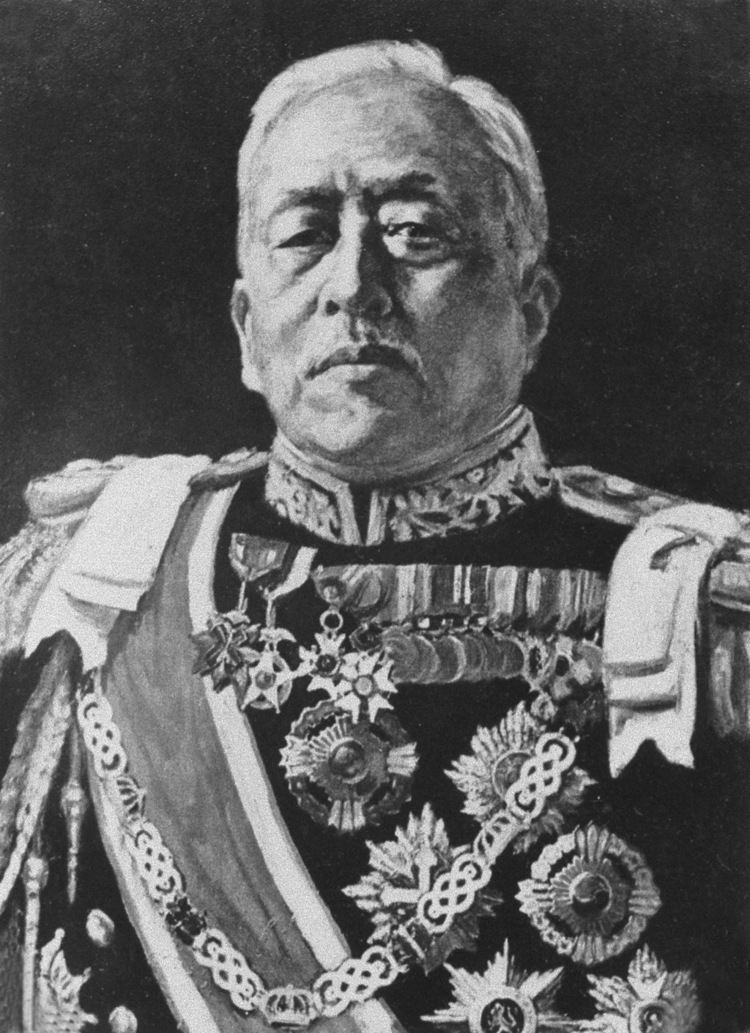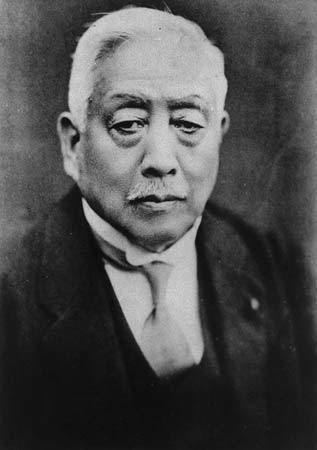Monarch Showa Preceded by Hanzo Yamanashi Name Saito Makoto Political party Independent politician | Monarch Showa Monarch Showa Role Politician | |
 | ||
Preceded by Korekiyo Takahashi (Acting) Similar People Tsuyoshi Inukai, Takahashi Korekiyo, Osachi Hamaguchi, Hara Takashi, Fumimaro Konoe | ||
sait makoto monument 2015 11 06 sendai nishi park
Viscount Saitō Makoto, GCB (斎藤 実, October 27, 1858 – February 26, 1936) was a Japanese naval officer and politician.
Contents
- sait makoto monument 2015 11 06 sendai nishi park
- Saito Makoto Japan VS Yunika Barakati Bimasakti Ternate
- Early life
- Military career
- Political career
- Prime Minister
- Honours
- References

Saitō was an admiral in the Imperial Japanese Navy. He was two-time Governor-General of Korea from 1919 to 1927 and from 1929 to 1931, and the 30th Prime Minister of Japan from May 26, 1932 to July 8, 1934.
Saito Makoto (Japan) VS Yunika Barakati (Bimasakti Ternate)
Early life
Saitō was born in Mizusawa Domain, Mutsu Province (part of present-day Ōshū City Iwate Prefecture), as the son of a samurai of the Mizusawa Clan. In 1879, he graduated from the 6th class Imperial Japanese Naval Academy, ranking third out of a class of 17 cadets. He was commissioned an ensign on September 8, 1882, and promoted to sub-lieutenant on February 25, 1884.
Military career
In 1884, Saitō went to the United States for four years to study as a military attaché. Promoted to lieutenant on July 14, 1886; in 1888, after returning to Japan, he served as a member of the Imperial Japanese Navy General Staff.
After his promotion to lieutenant commander on December 20, 1893, he served as executive officer on the cruiser Izumi and battleship Fuji.
During the First Sino-Japanese War, Saitō served as captain of the cruisers Akitsushima and Itsukushima. He received rapid promotions to commander on December 1, 1897 and to captain on December 27. On November 10, 1898, he became Vice Minister of the Navy, and was promoted to rear admiral on May 20, 1900
Political career
Saitō was again Vice Navy Minister at the start of the Russo-Japanese War of 1904–1905. He was promoted to Vice Admiral on June 6, 1904. He was awarded the Order of the Rising Sun (1st class) in 1906. After the end of the war, he served as Navy Minister for 6 years, from 1906 to 1914, during which time he continually strove for expansion of the navy.
On September 21, 1907, Saitō was ennobled with the title of danshaku (baron) under the kazoku peerage system. On October 16, 1912, he was promoted to full admiral. However, on April 16, 1914, Saitō was forced to resign from his post as Navy Minister due implications of his involvement in the Siemens scandal, and officially entered the reserves.
In September 1919, Saitō was appointed as the third Japanese Governor-General of Korea. Rising to the post right after the culmination of the Korean independence movement, he was subject to an immediate assassination attempt by radical Korean nationalists. He served as governor-general of Korea twice—in 1919–1927, and again in 1929–1931, implementing a series of measures to moderate Japan's policies on Koreans. He was awarded the Order of the Paulownia Flowers in 1924. On April 29, 1925, his title was elevated to that of shishaku (viscount).
In 1927, Saitō was a member of the Japanese delegation at the Geneva Naval Conference on Disarmament, and he later became a privy councillor.
Prime Minister
Following the assassination of Prime Minister Inukai Tsuyoshi on May 15, 1932 by fanatical navy officers who thought Inukai far too conciliatory (the May 15 Incident), Prince Saionji Kinmochi, one of the Emperor's closest and strongest advisors, attempted to stop the slide towards a military take-over of the government. In a compromise move, Saitō was chosen to be Inukai's successor. Sadao Araki remained as War Minister and immediately began making demands on the new government. During Saitō's tenure, Japan recognized the independence of Manchukuo, and withdrew from the League of Nations.
Saitō's administration was one of the longer-serving ones of the inter-war period, and it continued until July 8, 1934, when the cabinet resigned en masse because of the Teijin Incident bribery scandal. Keisuke Okada succeeded as prime minister.
Saitō continued to be an important figure in politics as Lord Keeper of the Privy Seal from December 26, 1935, but was assassinated during the February 26 Incident of 1936 at his home in Yotsuya, Tokyo. Takahashi, his predecessor, was shot dead the same day, along with several other top-rank politicians targeted by the rebels.
Saitō was posthumously awarded the Supreme Order of the Chrysanthemum.
Honours
From the corresponding article in the Japanese Wikipedia
